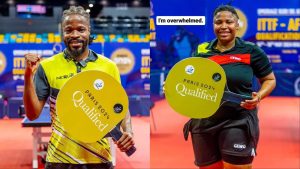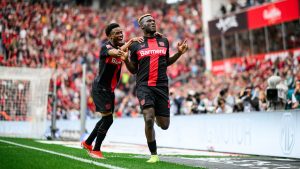The trans, disabled model taking on a $2-trillion industry
Written by Oscar Holland, CNNThis story forms part of a collaboration with Dazed Beauty — a new platform dedicated to redefining the language and communication of beauty.Aaron Philip’s life has been transformed by becoming the first black, trans, disabled model to sign for a major agency. Since joining the renowned Elite Model Management last September, the 17-year-old has shot editorial for i-D magazine and been named in Teen Vogue’s “21 Under 21,” among much else.This isn’t to say she’d struggled to forge her own opportunities — Philip had already modeled for the likes of ASOS and H&M through her own volition. But the backing of an agency (one that has represented Heidi Klum, Naomi Campbell and Tyra Banks) has opened access to an industry ill-equipped to meet the needs of a wheelchair user.”I freelanced for a year and I was doing jobs by myself and trying to navigate a career on my own (while in my) junior year at high school,” she explained on a video call from her home in the Bronx. “Sometimes I’d have to coordinate photo shoots myself, (or) with the people around me, and find people to assist me or help on set. It was a lot of back and forth.””There’s been a really, really dramatic difference,” she added.Philip sees disability as a source of huge discrimination in an industry worth $2.4 trillion, according to McKinsey. Credit: Bryan WhitleyBorn with cerebral palsy and identifying as a gender-non-conforming trans woman, Philip is an unprecedented force in mainstream fashion. Although she consistently rejects the activist label (“i’m not an activist,” she tweeted in December, “i just give a f*** lol.”), the Antigua-born model is nonetheless vocal about her high expectations for the industry.”There’s still a great lack of visibility and attention towards people with disabilities in fashion,” she said. “As of right now, I’m one of two physically disabled models in the entire industry, next to Jillian Mercado.”It shouldn’t be the responsibility of anyone who is marginalized to amplify their voice when there are so many voices that can amplify (it for) them,” she added. “But it’s just the way of getting to where you need to be. So I’ll do it. And hopefully I’ll do it so that other girls in my position don’t have to — they can just live and do their jobs.”With trans visibility surging in recent years (gender non-conforming models have earned a significant presence at the “big four” fashion weeks), Philip now sees disability, rather than race or gender, as the most prominent target of industry discrimination.Last September, Aaron Philip became the first black, trans, disabled model to sign for a major agency. Credit: Bryan WhitleyHer self-professed dream of being a runway model suffered a setback last year, when an opportunity to appear at New York Fashion Week reportedly fell through due to lack of wheelchair access. Yet she remains defiantly optimistic about what can be achieved, combining Gen-Z wokeness with sage realism about how fashion works. Her hopes for the industry revolve around the fulfillment of social obligations, not token gestures.”The fashion industry has only known one type of body, and one type of marketable figure for so long,” she said. “(But) now we’re entering this time, and this climate, where all types of bodies want to be pushed forward and celebrated — not only celebrated, but be seen as desirable and marketable.””I know it’s about business,” she added. “But at the same time, there’s always a way to make business inclusive and marketable towards anyone, whether you’re working in it or you’re consuming it.” (She makes a similarly pragmatic case for improved wheelchair access in America’s cities: “Accessibility benefits anyone and everyone. It can’t hurt anyone. It can’t hurt business. It will literally improve everything.”)Pushing diversityPhilip’s rise to prominence would have been unimaginable just a few years ago. As well as reflecting the industry’s slowly changing culture, her ascent can also be credited to the power of social media. “I owe my success to Twitter — I’d never not say that,” she said. “Social media was my platform to put myself out there and let people know what my aspirations were. They took to it and boosted me up.”Related video: China’s fight for transgender rights The model’s Twitter and Instagram accounts — where she has a combined following of over 66,000 — offer a daily stream of selfies, anti-transphobia and self-aware humor. In one tweet, posted days after our interview and now shared thousands of times, she asked, “Would y’all date a cisgender?” instigating hundreds of replies from followers, many of whom playfully inverted the standards imposed on trans people. (“Only if they disclose that about themselves immediately,” wrote one user. “Not into that kinky stuff,” another replied “Not cisphobic. My 2nd cousin’s cis. But they need to be with their own kind.”)Aside from her dedicated online following, the model’s rise is often traced back to a viral 2017 tweet, now shared more than 25,000 times, in which she declared: “honestly when i get scouted/discovered by a modeling agency it’s OVER for y’all!” But while social media has helped democratize and diversify visibility, Philip remains acutely aware that there are industry gatekeepers encouraging what she describes as “institutional ableism” — and she wants to do something about it.”Maybe in the future I’ll be a casting agent who specializes in casting people of marginalized identities in high fashion,” she suggested. “I want diversity to be pushed forward, forward, forward, and I think maybe (that’s how) I can do it.”






